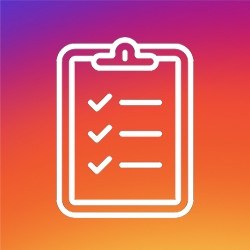Tips & tricks from industry experts on how to use Instagram Engagement Pods to hack the Instagram Algorithm.

What is an Instagram Engagement Pod?
Instagram Engagement Pods are the latest trend helping engagement-hungry Instagram users game the company’s algorithm to gain additional exposure.
Pods are groups of Instagram users that commit to consistently engaging with each other’s content to increase impressions and engagement. Once you’ve joined a pod, you will be expected to engage with your fellow pod-members on a regular basis with the expectation that they will do the same.
If you’ve read about them, you’ve probably heard mixed reviews: some claim massive effectiveness, while others claim they’re time-consuming and detrimental. I’m not here to advocate for one way or another. I’m here to tell you that if you’re going to do it, here’s how to do it to get the most value and decrease your likelihood of being reprimanded by Instagram.


Why do people use pods?
In order to understand why people use Instagram pods, you need to understand how the Algorithm works.
When you first share a post to Instagram, they serve that post to a small percentage of your total audience. Based on how that post performs with a small group of people (in addition to quite a few other factors such as caption contents, network, etc.), Instagram will grade the quality of your content. This “score” determines how your post is delivered in the feed as well as in the Discover tab.
By using pods, users can increase the volume of engagement they are receiving in the small testing window, and therefore increasing your content’s “score”.
So, at the end of the day, pods help to deliver on three core objectives:
- Increase the number likes and comments
- Increase organic reach in the feed
- Increase the likelihood of a post ending up in Discover
- Make new connections
While that last bullet may not be the reason most people get involved in pods, it’s a benefit that many influencers agree with.
“[Pods] actually a great way to get to know other influencers in your niche and community!”
– Talia Koren, Instagram Growth Specialist


What types of pods are there?
There are a multitude of different types of pods out there, all of which that have different requirements for entry, rules, and purposes:
- Niche vs. Broad: While some pods are focused on specific niches, others are not. Niche-specific pods are typically smaller and more exclusive, whereas broad pods are typically larger and require a smaller barrier.
- Follower-based vs. Not: Many pods require their group members to have at least a certain number of followers in order to join, while others do not.
- Engagement vs. Likes vs. Comments: While some posts focus on all types of engagement, others are specific to requesting either likes or comments.
- Drops vs. Rolling vs. Groups: Drop pods are pods that blast out lists of accounts to engage with at specific hours. You must submit your post during a certain timeframe, and if you’ve done so, you must engage with everyone else who submitted to that drop.
Rolling pods require you to engage with a certain number of posts that were most recently shared before you can share yours.
Lastly, group pods work on more of an honor system, where users will share posts at any time and other members are expected to engage. - Platform variety: Pods are available on a variety of platforms, including Instagram, various messaging apps (Telegram being particularly popular), as well as Slack. It seems as though Instagram pods tend to be smaller and more exclusive, whereas those taking place on messaging apps tend to be larger and broader.
Later I will lend some insight into which types of pods different types of people should join.


How do you find pods?
So, you want to join a pod. Inherent in the idea of these secret groups is the difficulty in finding them.
According to Moritz von Contzen, whose Agency has over 60 million followers on Instagram, it’s all about networking.
“To find the engagement groups the single best thing you can do is to network with account owners. Immerse yourself into the experience.”
– Moritz von Contzen, CEO & Founder of Avenik
But there are some other paths to finding groups that industry insiders recommend:
- Message accounts within your niche
- Join Instagram-related groups on Facebook (such as Moritz’s)
- Search Twitter for mentions of Engagement Pods
- Read the Instagram Subreddit
- And the age old answer to any question: Google it! (hint: try Googling “Telegram Engagement Pod List)
Be aware, some pods require payment to entry, though this seems to max out around $20, but many find the benefit is worth the investment.
“Telegram app is the best source for being apart of IEP’s. Some of the communities have over 3000 members to there can be a lot of engagement to your content. Most of them you’ll have to pay to get into but once your in you will benefit from the engagement.”
– Mike Street, Digital Strategist, Founder of SF1M Consulting
If you’re in the social media industry, these pods seem to be everyone’s dirty little secret. Ask around, and I’m sure you’ll be surprised what you can get in on from your personal connections alone.


What are some pod best practices?
There’s a ton of literature out there about what pods are, why they exist, and how they work. Yet, as I’ve recently started helping my clients to incorporate pods into their engagement strategy, I’ve found little information as to how to get maximum value out of using them.
So, I’ve compiled a guide of the key tips and tricks to leverage when jumping into Instagram Engagement Pods:

Proceed with caution:
There are some things you should know before joining a pod:
- This is not a magic pill that will transform you into an influential engagement supernova over night. You need to invest time and energy into pods to see substantial returns.
- This is risky business. Instagram doesn’t appreciate when people gaming the system. A primary objective when engaging with pods is to not look spammy.
- Instagram is a secret fortress, and even those of us who dedicate our careers towards understanding their methodology still can’t say with any sort of certainty what’s going on over there unless it comes direct from the horse’s mouth.
- As an analytics nerd, this one truly pains me: kiss your ability to measure what works and what doesn’t goodbye. You have no visibility into what likes and comments came from pods vs. which ones were organic. So, I recommend conducting a thorough audit of your account before beginning to use pods.
- Once you stop using pods, the level of engagement will likely decline. The engagement you’re receiving is more or less bought, but with your time rather than your money.

Join a few different types of pods.
Since no one is completely sure how the algorithm selects high quality content, investing in a few types of pods will allow you to maximize the odds of getting the proverbial gold star.
Here is some guidance as to what types of pods different accounts should join:
- Normal people: For the average Joe with an average following, expect that it may be difficult to join a niche-specific pod. Instead, invest time in the broader pods until you’re able to boost your numbers. I would also recommend making sure you join a combination of engagement pods as well as ones that guarantee likes or comments specifically, as engagement pods don’t always get you what you’re looking for. Similarly, I would invest in a combination of drops and rolling pods in case you post at a time when your drop pods are not particularly active.
- Influencers: If you have the scale to join follower-based and niche-specific pods, do it. But, joining broader pods that aren’t follower-based will also allow you to achieve a larger scale of engagement.
- Brands: Stick to niche-specific pods that are highly selective, especially if you’re a brand with an established reputation. Engaging with content outside of your niche may appear suspicious to anyone who may randomly spot this and damage your brand reputation. If you are smaller, and not well established, seek out (or create on your own!) an engagement pod dedicated to small businesses.

Follow the rules, but not at the expense of your effectiveness.
When joining a pod you will be sent specific rules that are followed by this group. This will include things such as times to engage, how to format your messages, comment length, etc.
With that being said, when joining large, broad pods, there is limited regulation in who joins. This means that you need to be mindful as to who you engage with.
First and foremost, avoid accounts that seem fake or spammy. This will include accounts that post the same post repeatedly, have suspicious names or descriptions, or have poor engagement.
“Avoid accounts with lower than .5% engagement rate. In an ideal world — anything above 1% is acceptable.”
– Moritz von Contzen, CEO & Founder of Avenik
Others I’ve spoken with claim that while the moderators of pods monitor activity to make sure that you are following the rules, if you skip over a couple accounts in the pod, you likely will not see repercussions.

Leverage pods soon after posting.
Because Instagram uses the engagement during the time immediately after posting to score the quality of your post, it is important to garner engagement quickly.
“Send your post to the pod at least 15 minutes after you post. This way your post will gain traction organically, then members of your pod can add to the engagement, furthering the popularity of your post.”
– Katie Melissa, Model & Entrepreneur

Decrease your hashtag usage.
Instagram has recently cracked down on hashtag usage, often shadow banning those who use too many hashtags, spammy hashtags, broken hashtags, or use the same hashtags to frequently
In other words, using hashtags may indicate to Instagram that you’re a spammy account. With Engagement Pods being a controversial tactic that could potentially flag your account, you want to decrease your risk elsewhere.
Limit your hashtag usage to one or two hashtags per post, focusing on hashtags that are timely, specific to your niche, and are not too large.
“Use hashtags that have around 500,000 [posts]. This will be the best bet in order to land on that hashtags top post page/discovery and get the max benefits.”
– Mike Street, Digital Strategist, Founder of SF1M Consulting
Additionally, avoid using the following format to share hashtags, as it’s believed that Instagram has picked this up as a spammy pattern:
[CAPTION]
.
.
.
#hashtag #hashtag #hashtag #hashtag

Write thoughtful comments, get thoughtful comments.
Instagram knows high quality comments from poor quality comments. Some even hypothesize that Instagram uses image recognition software to determine whether comments are spammy or not based on their relevancy.
The more committed you are to write longer, thoughtful, relevant comments, the more likely you will be to receive them back––particularly in smaller pods.
Here are some tips for leaving thoughtful comments:
- Make sure to read the caption before responding
- Read other people’s comments to make sure you have a unique response
- Don’t simply post a series of emojis
- Include at least 5 words per comment
- Consider @mentioning the person or someone else
- Avoid vague language such as “cute”, “awesome”, “beautiful”, etc.

Get more comments than you’d like and delete the ones that suck
With the previous tip comes the implication that a lot of the comments you receive will be quite bland, irrelevant, and appear spammy on your page. I would recommend accumulating more comments than would appear organic and delete the ones you don’t like (i.e., ones that don’t follow the guidelines above).

Specify what you want people to comment on
When sharing your post with your pod, ask them to comment on a particular thing within your picture. This is even more relevant in larger, broader pods. While most won’t follow, it’s a good way to get more specific comments in reaction to your post.
Make sure that this does not violate the rules of your pod before doing so.

Reply to comments left on your posts
Once you’ve received comments from your fellow pod-members, it’s important to respond to them. Not only is it good manners, but it will help your post’s quality “score”.
“Always respond to every comment because it still counts as engagement in Instagram’s algorithm and encourages people to continue commenting on your posts.”
— Talia Koren, Instagram Growth Specialist

Switch up your pods regularly
Another belief is that Instagram can identify pod behavior by determining consistencies in those engaging with your content. Once they’ve theoretically identified who is in your pod, they will discount their engagement when determining the quality of your content.
Switching up your pods regularly will limit Instagram’s ability to determine which ones you are a part of.
With that being said, this is unproven, so don’t burn bridges with pods where the personal connections are more valuable than the engagement.

Avoid using automation platforms
In recent months Instagram has cracked down on automation, shutting downengagement automation sites. Many still remain and are able to be used to engage with your pods (e.g., MassPlanner and FollowLiker).
If want to stay safe, avoid leveraging these platforms unless you’re an expert on how to automate without tipping off Instagram. At worst, many have experienced their accounts being suspended or even banned from leveraging automation behavior. On the less extreme end, your content may just be deemed to be lower quality.

Make sure not to engage with too many at once
I said it before, and I’ll say it again: pods are a time commitment. If you are not willing to invest time into this, you will not see value from it. Many social industry experts agree, effectively engaging in multiple pods can require up to an hour per day.
“At times, it can feel like a full — time job: imagine spending about an hour a day interacting with the content in the pod. And reacting in a timely manner is crucially important as it signals to Instagram about the quality of the content.”
– Ksenia Newton, Digital Marketing Manager @ CrossCap
Another alternative tactic is to pay someone to manage the pod engagement process for you. As it is fairly easy to execute, you should be able to find qualified people to manage it for you at a quite affordable rates.

Build connections in your pods
You will likely organically gain followers from engaging in pods, but putting in the extra effort to seek out people to follow will increase the impact of your efforts.
Take the time to find accounts within your pod that are aligned to your interest and follow them. If they do not follow back within a few days, unfollow them. There are many apps that do this, such as Unfollowgram and InstaFollow.

Don’t overwhelm your pod
Be conscious not to share too many posts with your pod, as this may be overwhelming to them. This is especially true in smaller, more niche pods.
“I caution pod-users not to send more than 1–2 posts to the pod per day. Additionally, rather than sending the actual photo post to the pod, some users prefer to send “New” to be very cautious.”
– Katie Melissa, Model & Entrepreneur

Test different times to post
There are various benefits for sharing posts with your pods at different times during the day. These may differ by niche, but overall:
- Many pods are most active during the day, this means you will garner the most engagement from drop pods during the day, but will also need to put in the most amount of work
- Posting late at night may get you less traction, but will decrease the likelihood that your followers see you engaging strangely via their following activity tab.
- If you’re strongly confident in it, don’t abandon what times work best for your account. It’s more important to cater to your existing fans than to your pod.
Please share your pod experiences and best practices in the comments!


Who helped you write this?
I undoubtedly could not have written this without the help of some really brilliant people within the industry. I highly suggest connecting with each and every one of them to stay up-to-date on the latest in social marketing and growth hacking:
- Moritz von Contzen, CEO & Founder of Avenik
- Ksenia Newton, Digital Marketing Manager at CrossCap
- Talia Koren, Instagram Growth Specialist
- Katie Melissa, Model & Entrepreneur
- Mike Street, Digital Strategist, Founder of SF1M Consulting
Disclaimer: These individuals have not endorsed this article in its entirety and do not necessarily agree with all of the insights listed above.